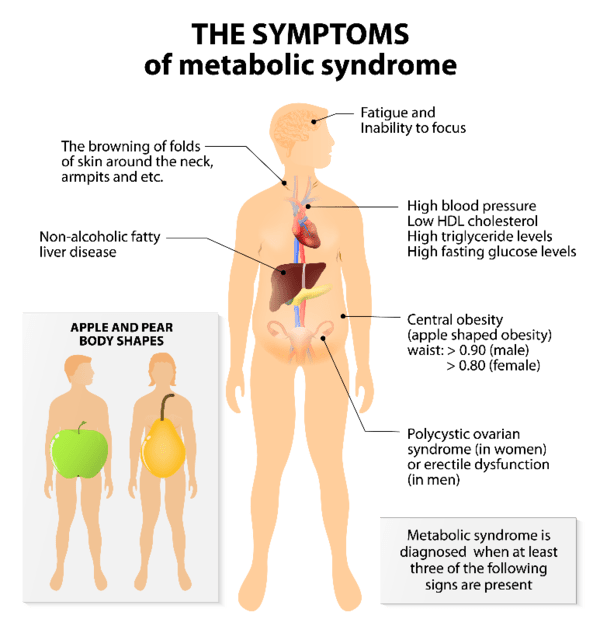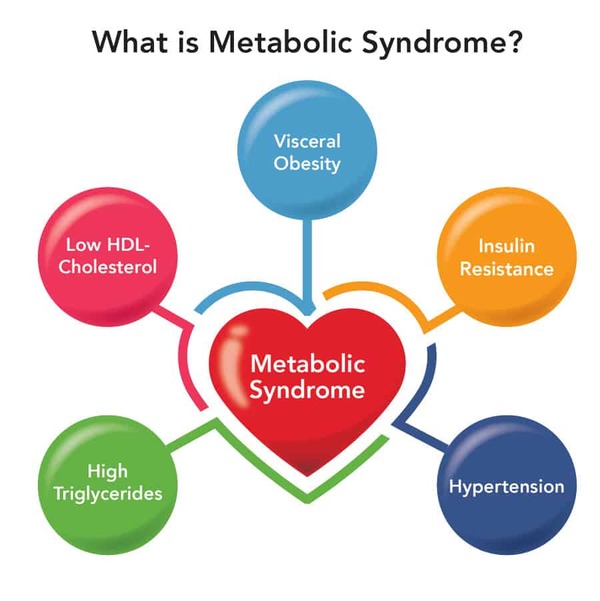An estimated 10.5% of the United States population have type 2 diabetes, often preceded by metabolic syndrome symptoms. An estimated 34.2% of U.S. adults have prediabetes, which frequently develops from metabolic syndromes. This insidious syndrome is rarely discussed but quite common, afflicting 23% of U.S. adults. Metabolic syndrome often acts as a precursor to prediabetes.
A prediabetes range occurs when blood sugar levels rise above normal, but do not reach the threshold for a type 2 diabetes diagnosis. Some common tests to determine blood sugar levels are the fasting plasma glucose test, oral glucose tolerance test, and hemoglobin A1C. A fasting plasma glucose level in the prediabetes range falls between 100-124 mg/dL. An A1C level between 5.7 – 6.4 % also indicates prediabetes. As the prediabetes range rises, such as 126 mg/dL or higher on the fasting plasma glucose test, or 6,5% or higher on the A1 test, the diagnosis of diabetes is made.
Production of Insulin
Insulin is produced in the pancreas by beta cells in the islet of Langerhans. In diabetes, either the pancreas does not produce enough insulin or the body becomes resistant to insulin. If blood sugar gets too high, the body tries to lower it by stopping insulin production and releasing hormones such as glucagon and epinephrine. Learn more about Ritual Multi Vega Supplements.
Signs and symptoms of diabetes mellitus can include polydipsia and polyuria. Because the body is unable to reabsorb the extra glucose, it requires extra water to help filter (polydipsia) it out of the system. And with the extra fluid is extra urination (polyuria).

Metabolic syndrome is a cluster of metabolic abnormalities that occur simultaneously, each contributing to an increased risk of developing chronic disease. These abnormalities include elevated blood pressure, high blood sugar levels, excess body fat around the waist, and abnormal cholesterol or triglyceride levels. When three or more of these conditions coexist, the diagnosis of metabolic syndrome is made. According to the American Heart Association, metabolic syndrome is diagnosed when at least three of the following conditions are met:
- Elevated waist circumference (greater than 40 inches in men, 35 inches in women)
- Triglyceride level 150 mg/dL or higher
- High-density lipoprotein (HDL) cholesterol lower than 40 mg/Dl for men and lower than 50 mg/dL for women. HDL is considered to the “good” cholesterol.
- Blood pressure of 130/85 mm Hg or higher
- Fasting glucose level of 110/mg/Dl or higher
Metabolic Syndrome Treatment
Having metabolic syndrome can increase one’s risk for heart and blood vessel disease. High cholesterol and high blood pressure contribute to the buildup of plaques in one’s arteries. Once plaque narrows and hardens the arteries, the artery opening actually narrows. The heart has to work harder to push blood through the narrowed arteries. This in turn can lead to a heart attack or stroke.
Lifestyle changes are the first line of treatment for metabolic syndrome. The focus is on eating a healthy mix of foods, moving your body often and keeping a good weight over time.
- Weight loss through a calorie-controlled, low glycemic diet
- Regular physical activity
- Smoking cessation
- Medications may also be prescribed, if needed, for high blood pressure, diabetes or high cholesterol
If left unaddressed, metabolic syndrome can have far-reaching consequences on overall health and well-being. Individuals with metabolic syndrome face an increased risk of developing type 2 diabetes, cardiovascular disease, stroke and even are at risk for certain types of cancer.
Metabolic syndrome can contribute to the development of nonalcoholic fatty liver disease, a condition characterized by the accumulation of excess fat in the liver. This can progess to more severe forms of liver damage.
All of above is for information only, and is not to be taken as medical advice. Please see your medical doctor for formal advise.
Barry Schustermann
Follow me on X @BarrySchust
Follow me on Facebook @Barry Schustermann



